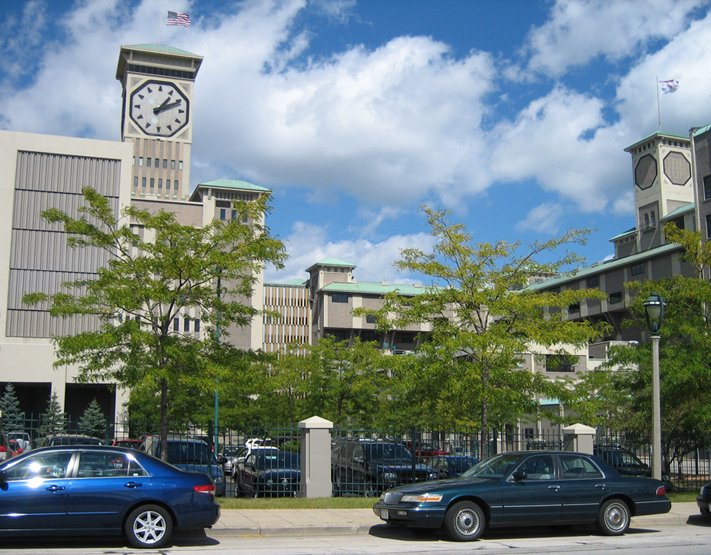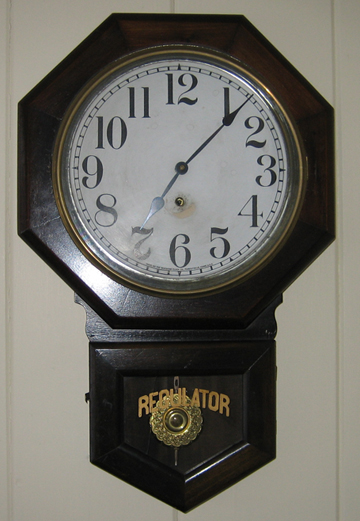Although I thought the story about the origin of the octagon was fascinating, worth pursuing, and quite a good mystery, when the Contact article and additional inquiries didn’t produce an answer, the company’s communications hierarchy said it was time to give up and pursue other stories.
I left Allen-Bradley in November of 1984 to become a freelance writer but continued doing assignments for the company.
Years went by and I didn’t think much about why the octagon became the trademark, but then one day the mystery was brought back by something I had seen countless times since at least the early 1980s. My wife’s parents were moving from their ranch-style home near the driftless area outside of Cross Plains, Wisconsin, to a retirement community on Madison’s northeast side.
They decided that a clock that had hung in their living room for years was too large to take to their new condominium and asked my wife if she wanted it. The clock originally kept time in the office of her grandfather’s used-car-salvage-yard business in Kingsford, Michigan.
My wife took the clock, which wasn’t working at the time. It's operated by a key that winds a spring which in turn drives a pendulum. The pendulum, with a somewhat ornate and weighty brass medallion at the end, swings back and forth in a compartment below the round face, which is surrounded by an octagonal frame. “Made by the Sessions Clock Company, Forestville, Conn. USA” is printed in an arc at the bottom of the dial.
A door with a glass pane provides access to the lower compartment and permits the pendulum’s movements to be viewed. The word “Regulator” is painted across the glass.
I took the clock to Hawkins Clock Center in West Allis to have it fixed. The repairman said that it probably had been produced in the early 1900s and was called the “schoolhouse clock” because such timekeepers were frequently used in classrooms, beginning in the late 1800s.
Clocks by Douglas H. Shaffer, provides confirmation, “…because of its widespread use in schoolrooms in the late nineteenth and early twentieth centuries, it is often called the schoolhouse clock.” They were also popular in train stations, post offices, and other public buildings.
The clock was fairly accurate the Hawkins repairman said and the whole package, octagonal wood case, mechanism, etc. was inexpensive. In fact, he added, along with their use in public buildings which are not known for lavish spending, clocks of this kind were often given away by businesses as a goodwill gesture, much as companies today give away T-shirts, caps, and other merchandise.
In Antique American Clocks & Watches, Richard Thomson writes that the earliest American examples of these clocks were, “made by Seth Thomas, with movements designed by Silas B. Terry.” Chris Bailey, author of 200 Years of American Clocks and Watches and curator at the American Clock and Watch Museum in Bristol, Connecticut, said these clocks were first produced in the 1830s and became enormously popular.
Bailey pointed out the word “regulator” has its own distinctive history. “Originally, a ‘regulator’ was a specialized and unusually precise clock that jewelers would acquire as a standard of time-keeping,” he said. “Other clocks and watches in the jeweler’s shop would be set to the time displayed on the regulator.”

Both Towers
Current clock and original clock tower
converted to temperature gauge.
Photo by author.

Sessions Clock Company
schoolhouse clock.
Photo by author.